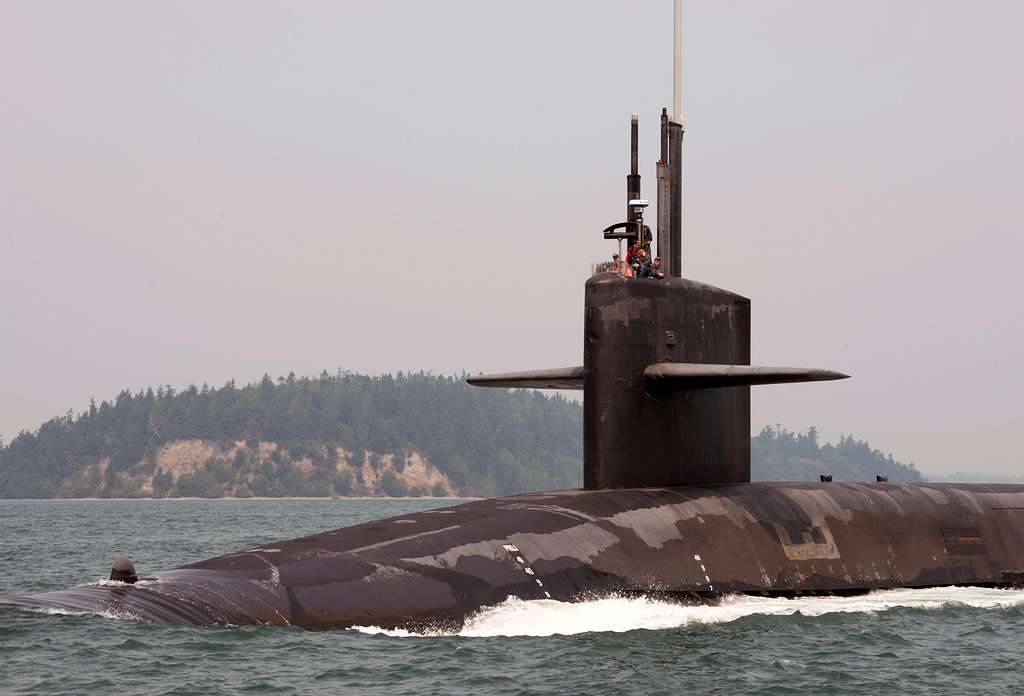The Ohio-class ballistic-missile submarines are among the most formidable military assets ever created, boasting more nuclear or conventional firepower than any other platform on air, land, or sea. These 18 submarines form a crucial part of America’s nuclear triad, designed to be ultra-quiet, laden with nuclear weapons, and capable of surviving any assault to fulfill their mission.
The concept of deploying nuclear weapons at sea emerged in the 1950s, with the U.S. Navy initially focusing on large rockets or cruise missiles launched from surfaced submarines. However, by 1960, the Navy had developed the Polaris A-1 submarine-launched ballistic missile (SSBN) and ballistic-missile submarine, marking a significant advancement in nuclear deployment strategy.

The Ohio-class submarines, introduced in the 1970s, are the largest American submarines ever built, measuring 560 feet long and weighing 18,750 tons when submerged. These submarines can operate entirely underwater, travel at speeds exceeding 30 knots, and remain submerged indefinitely, limited only by the crew’s food and water supply.
The primary armament of the Ohio-class submarines are their submarine-launched ballistic missiles. The first eight Ohio-class submarines were equipped with Trident C-4 missiles, which were later replaced with the heavier Trident II D-5 missiles. Each of these missiles can carry multiple thermonuclear warheads, ensuring a devastating response to any surprise attack on the United States.
The high operational tempo of the Ohio-class submarines is maintained by assigning two separate crews, Blue and Gold, to each submarine. This allows for more frequent deployments and shorter notice periods if necessary. Despite the reduced threat since the Cold War, these submarines still conduct an average of 2.3 patrols per year, each lasting around 70 days.
The New Strategic Arms Reduction Treaty (New START) signed in 2010 between the United States and Russia limited the number of deployed strategic nuclear weapons and delivery systems. As a result, the U.S. Navy filled four silos per submarine with concrete, reducing the number of missiles each ship could carry.
Four Ohio-class submarines were converted into guided-missile submarines (SSGNs) due to the reduced need for ballistic-missile submarines. These SSGNs were equipped with Tomahawk land-attack cruise missiles instead of Trident missiles, providing them with significant firepower.
The Ohio-class submarines have proven to be an exceptional success, safeguarding nuclear weapons for decades without a single major incident. The U.S. Navy plans to replace the 14 nuclear-armed Ohio-class submarines with 12 Columbia-class submarines, with the first ship expected to conduct its first patrol in 2031.
This article was adapted from the original by Kyle Mizokami on Popular Mechanics.






